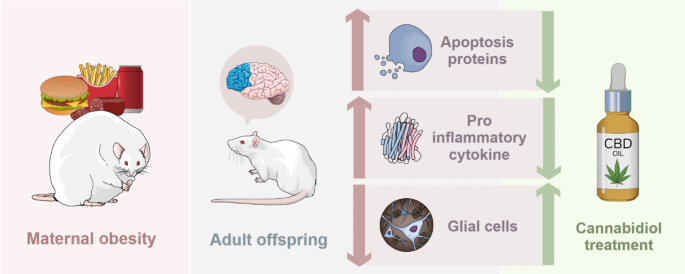
“The endocannabinoid system (ECS) is essential for energy hemostasis, obesity, and other metabolic disorders.
Cannabidiol and polyunsaturated fatty acids (PUFAs), which are found in hemp seed oil (HSO), have been found to regulate adipose tissue through the ECS. Thus, human mesenchymal stem cells (hMSCs) were differentiated into pre-adipocytes and then treated with cannabidiol (CBD), tetrahydrocannabinol (THC), 0.05% HSO, or 0.1% HSO for 3 days (72 h).
The mixture was subsequently maintained in maintenance media for 14 days, after which the condition media (CM) was collected. In addition, THP-1 cells were used to assess the inflammatory response upon exposure to CM collected from different groups of experimental cells. Quantification for lipid accumulation (Oil red O), gene expression (RT‒qPCR), and protein levels (Western blot) were performed.
We found that HSO-treated cells matured toward brown-like adipose tissue with a spindle shape and decreased intracellular lipid accumulation. HSO treatment decreased the expression of genes associated with fat accumulation and browning (BAT), with the exception of UCP-1, which leans toward brown-like adipocytes. HSO treatment upregulated the cannabinoid receptors 2 (CB2), TRPV1, and GPCR55 mRNAs and leptin mRNA found with lower expression; no alterations were observed in cannabinoid receptors 1 (CB1), FAAH, and MGL mRNAs. In THP-1 macrophage, HSO treated CM decreased the expression of IL-6, IL-8, TNF-α, and leptin mRNAs significantly when compared to CBD and THC.
The potential of HSO in promoting brown fat characteristics through the CB2 and its effect on inflammation status offers an intriguing area for future research and therapeutic interventions.”
https://pubmed.ncbi.nlm.nih.gov/41258240
“Overall, the availability of balanced ratios of omega 3/omega 6 PUFAs and CBD in HSO favors in maintaining optimal ECS ligands in adipocytes. Our current study revealed that HSO treatment might promote the maturation of hMSC preadipocytes toward brown-like adipose tissue, which evident morphologically. ECS might mediate this effect, as HSO treatment downregulates the CB1 receptor and increases the CB2 receptor at the mRNA and protein levels. In addition, HSO treatment decreased inflammatory marker of IL-6, IL-8, TNF-α, and leptin compared to untreated cells; however, HSO treatment resulted in a minimalized the provoking of inflammatory cytokines compared with CBD and THC treatments in THP-1 cells. In conclusion, the potential of HSO in promoting the development of brown fat characteristics through the ECS and its effect on inflammation status offers an intriguing area for future research and therapeutic interventions.”
https://jcannabisresearch.biomedcentral.com/articles/10.1186/s42238-025-00343-2









